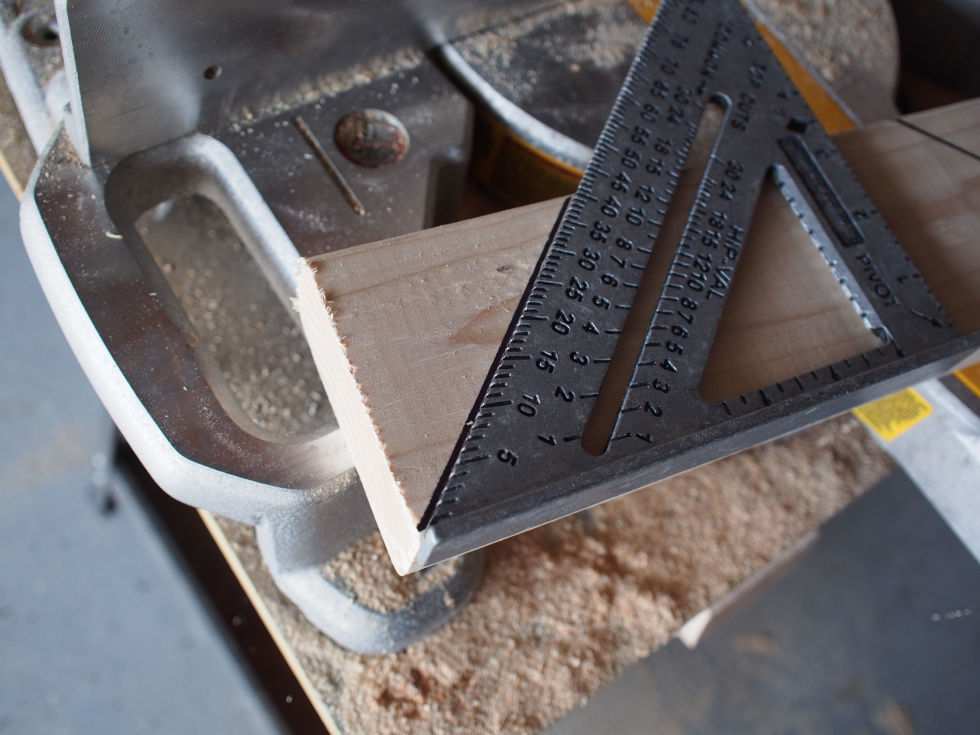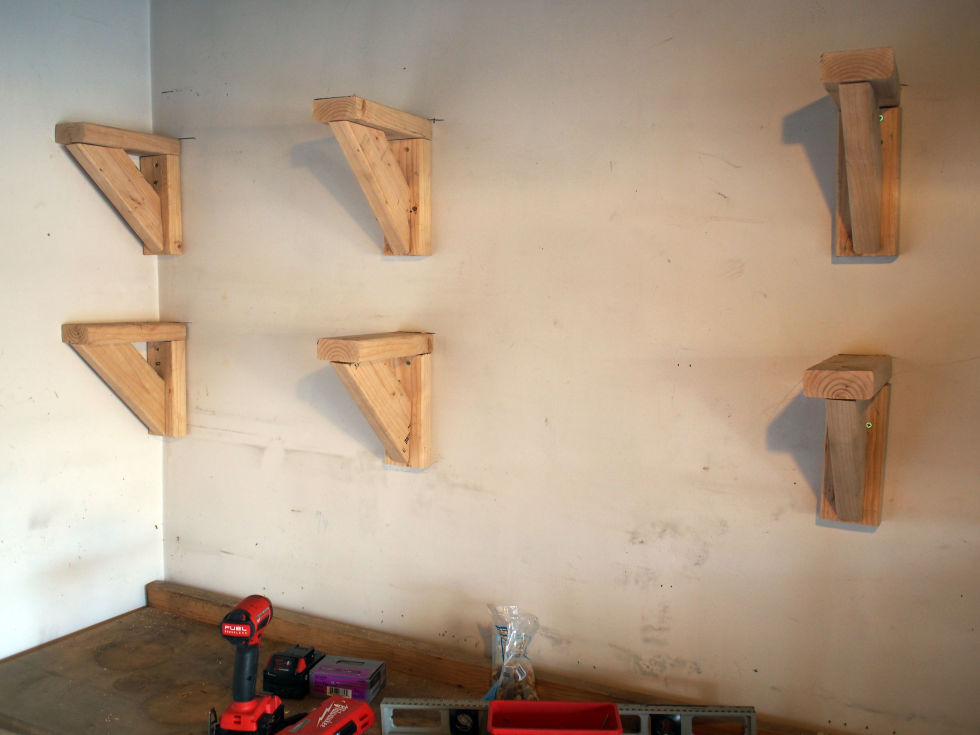Garage storage and shelving solutions are abundant, but the prices can be shocking. You can build your own garage shelves from scrap 2 x 4s and plywood, ones that will hold all of your tool cases, hardware, batteries, and more. This project can be completed in an afternoon and will instantly improve your work area.
You'll need a tape measure, spirit level, drill/driver or impact, circular saw, and miter saw to build these shelves.
Clear the Clutter
There's a work bench in there somewhere, but it would take a long time to get to it. These tools and cases need to be be moved off the bench but stored in an easy to reach location. There is plenty of empty wall space to make use of.
Cut List
The dimension of shelf width is hotly debated, but we settled on a depth of 16 inches. It's deep enough to support tool cases and standard boxes, but shallow enough as to not lose stuff in the back and have to reach to far. Our shelves are cut from 1/2-inch OSB and measure six feet in length. We used a circular saw to cut our shelves but if you bring your measurements to Home Depot or Lowe's they can make the cuts for you on their track saw which will save you a step.
We decided on using three support brackets for each shelf. We may have been able to get away with using two, but having the extra support means we won't have to flinch when loading up the shelves.
Using our miter saw we cut three lengths of 2 x 4s to build the support brackets. Six pieces at 12-inches, six pieces at 10-inches, and six pieces at 8 1/2-inches.
Mark 45 Degrees
We used a speed square to mark the 45 degree angles on each end of the 12-inch bracket cross member, and then cut it using our miter saw. We could have just eyed the cut with our miter saw which does have a light guide, but marking it first ensures better accuracy.
Assemble Brackets
We assembled all six brackets using standard 2 1/2-inch screws and our impact driver. We put two screws into each connected end. The longer 10-inch piece is the top of the bracket and the length of it will be in contact with the shelf. This way is much stronger than having the wall side of the bracket extend up to the shelf.
Scrap Assist
Easy tip: Use a 1-inch piece of scrap wood to raise the cross bracket which will make it easier to screw the ends together instead of trying to guess where the middle is and hold it in place.
Locate the Wall Studs
Like most homes, the wall studs here are 16 inches OC (on-center), but to confirm this we used a stud finder and marked out the stud locations we planned on securing the brackets to.
Level the Brackets
We placed our shelves 16 inches from the ceiling and then another 16 inches below the top shelf. This should provide enough room for the tallest of our cases without making the shelves so low they would get in the way of our workspace.
A spirit level was necessary to level the brackets which we then marked before pre-drilling them and attaching them to the wall studs.
Attach Support Brackets
Once we had the bracket placement set and they were level, we pre-drilled holes into the bracket and stud and secured them to the wall using 2 1/2-inch screws. We marked up the wall a bit more than we liked but we knew the shelves would cover it and it's also just the garage so it's no big deal.
Bracket Spacing
We attached the first bracket flush against the wall and then placed the second bracket 16 inches away, attached to a stud. We skipped the next stud and placed the final brackets a full 32 inches from the second one. If we were planning on putting some very heavy storage bins on the shelves we may have opted to attach another set of supports but for our needs it would be overkill.
Screw Down the Shelves
Once the brackets are up you are ready to attach the shelves. Make sure the shelf is pushed all the way back to the wall and then pre-drill four holes through the shelf and into the brackets. Then drive four screws down through the shelf into the 2 x 4 support. Drive the screws flush or even sub-flush so they don't snag on anything that slides over them.
Load It Up
After your shelves are firmly attached to brackets you can start loading them up. By building these shelves we've added convenient storage space for our tools which opened up our work bench for doing even more projects.



No comments:
Post a Comment